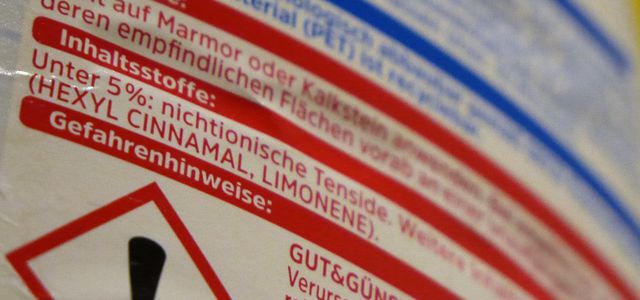
Hexyl Cinnamal is found in numerous products as a fragrance, although it is considered very questionable. Hexyl cinnamal is officially approved in the EU, but must be declared from a low dose.
Hexyl cinnamal is a component of many essential oils and can be extracted from the leaves of the cinnamon tree and from chamomile. It is used as a fragrance in numerous products, for example:
- Perfume
- cleaning supplies
- Deodorant
- laundry detergent
- Hand cream
- Body lotion
- toothpaste
- shower gel
- shampoo
Hexyl Cinnamal: Health Effects

(Photo: CC0 / Pixabay / nastya_gepp)
Hexyl Cinnamal is of concern because of its allergy potential:
- The Federal Environment Agency lists it among those substances that pose a particularly high risk of allergies.
- Also in the EU list (PDF) of the declarable allergenic substances is listed Cinnamal.
- in the Deodorant test from Öko-Test deodorants with Cinnamal were devalued by one grade.
- The German Allergy and Asthma Association (DAAB) also lists the substance as such that can trigger an allergy.
Hexyl Cinnamal is of concern because, according to the Association for Independent Health Advice (UGB) a Contact allergy (Type IV) can trigger. Here, allergic reactions such as reddening of the skin, wheals or chronic inflammation occur 24 to 72 hours after contact with the substance. In Germany, around 11.5 percent of people are allergic to a fragrance like Hexyl Cinnamal. If you suspect you may be allergic to Hexyl Cinnamal, get a medical exam. It is best to bring the product with Hexyl Cinnamal that triggered the suspicion.
Declaration for Hexyl Cinnamal due to allergy risk



(Photo: Sven Christian Schulz / Utopia)
The directive INCI (International Nomenclature of Cosmetic Ingredients) stipulates that Hexyl Cinnamal must be declared on cosmetics because of the allergy risk. This requirement already applies from the smallest quantities from:
- 0.01 percent (detergent and rinse-off products, e.g. shampoo)
- 0.001 percent (products that stay on the skin, e.g. skin cream)
According to the German Allergy and Asthma Association, Hexyl Cinnamal is one of the most common allergy triggers among fragrances. According to the DAAB, a contact allergy is not curable, so that the allergic reactions can always occur after contact with the fragrance. It is therefore recommended to use products DAAB seal or to check the ingredients of detergents and cosmetics. The free CodeCheck app can also help here.
Asthmatics potentially also affected by Hexyl Cinnemal
However, according to the UGB, it is now clear that fragrances are also in the air and can trigger an allergic reaction. Regardless of whether the allergens are inhaled from the air or the air comes into contact with the skin: Both transmission routes can lead to allergic reactions in people with a pronounced fragrance allergy.
Asthmatics can also react sensitively to fragrances such as hexyl cinnamal. According to the UGB, the substances can trigger symptoms such as headaches or even asthma attacks.
Read more at Utopia:
- Fragrances: dangerous substances, poor labeling
- Hair rinses: Öko-Test finds microplastics and dangerous fragrances
- Detergent allergy: symptoms, causes and alternatives for allergy sufferers